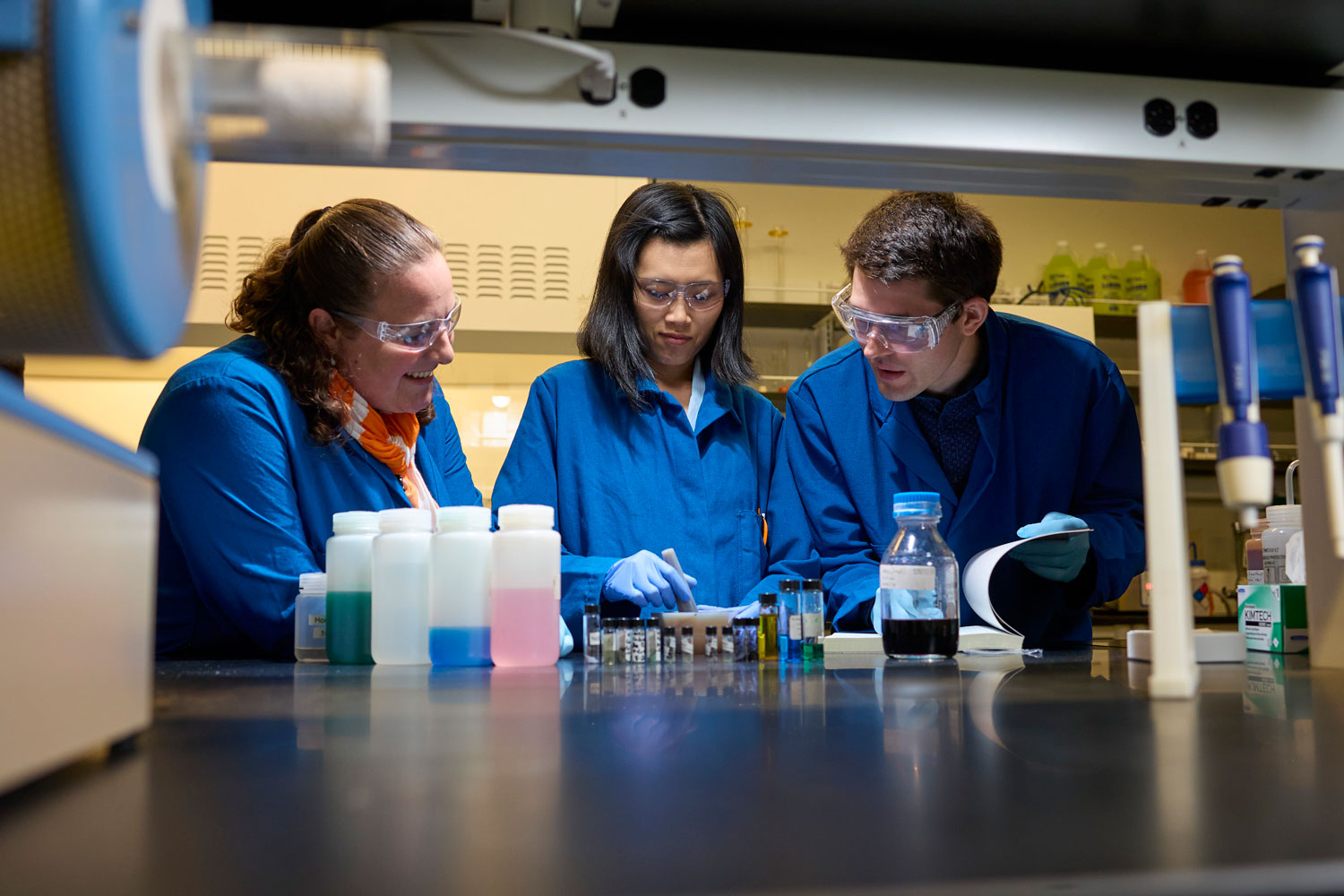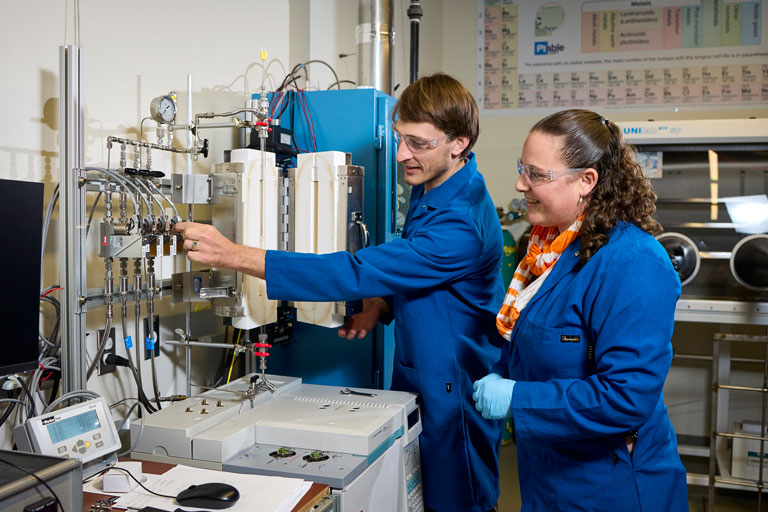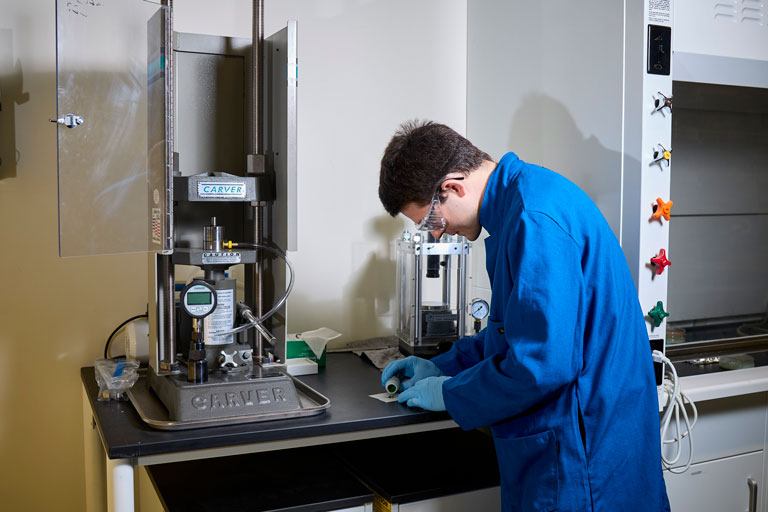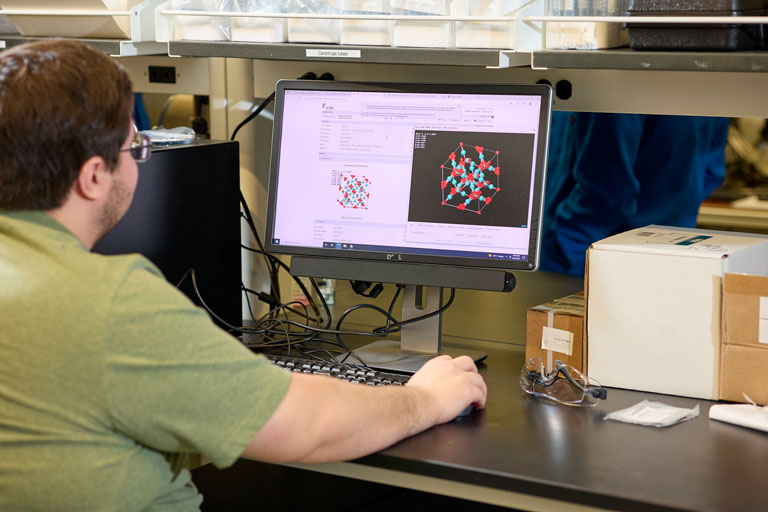
Katharine Page studies the atomic composition of materials and engineers new materials that can be used to build more efficient, more powerful, and more diverse fuel cells, catalysts, sensors, and electronics.
By Amy Blakely. Photography by Shawn Poynter.
An assistant professor of materials science and engineering and a scientist in the Neutron Scattering Division of Oak Ridge National Laboratory, Page has received a 2022 Early CAREER award of $701,296 over five years.
Complex oxides are materials essential for technologies such as cell phone batteries, capacitors in electronic devices, and catalysts that clean up industrial pollutants. Complex oxides contain oxygen and two or more types of metal ions. Their makeup allows for highly variable composition (that is, which ions are present) and structure (how the ions are arranged), which can be harnessed to improve technologies that rely on functional compounds.
By comparison, Page studies high entropy oxides, a relatively new class of ceramics that contain five or more ions from across the periodic table, which can lead to many different compositions and structures.
Instead of adding just one new positively charged ion, or cation, Page tries to create materials with new functionalities by adding multiple new cations at once.
She calls it the cocktail effect: “You take a little bit of this and a little bit of that, shake it up, and you might get something delicious.”
Working at the atomic level, the goal is to create materials that can withstand higher temperatures or other volatile conditions. Or develop a single new material that combines the properties of two materials, such as magnetism and electrical polarization. Or devise a material with improved conductivity.
“We make new materials, then study their structure,” Page said.
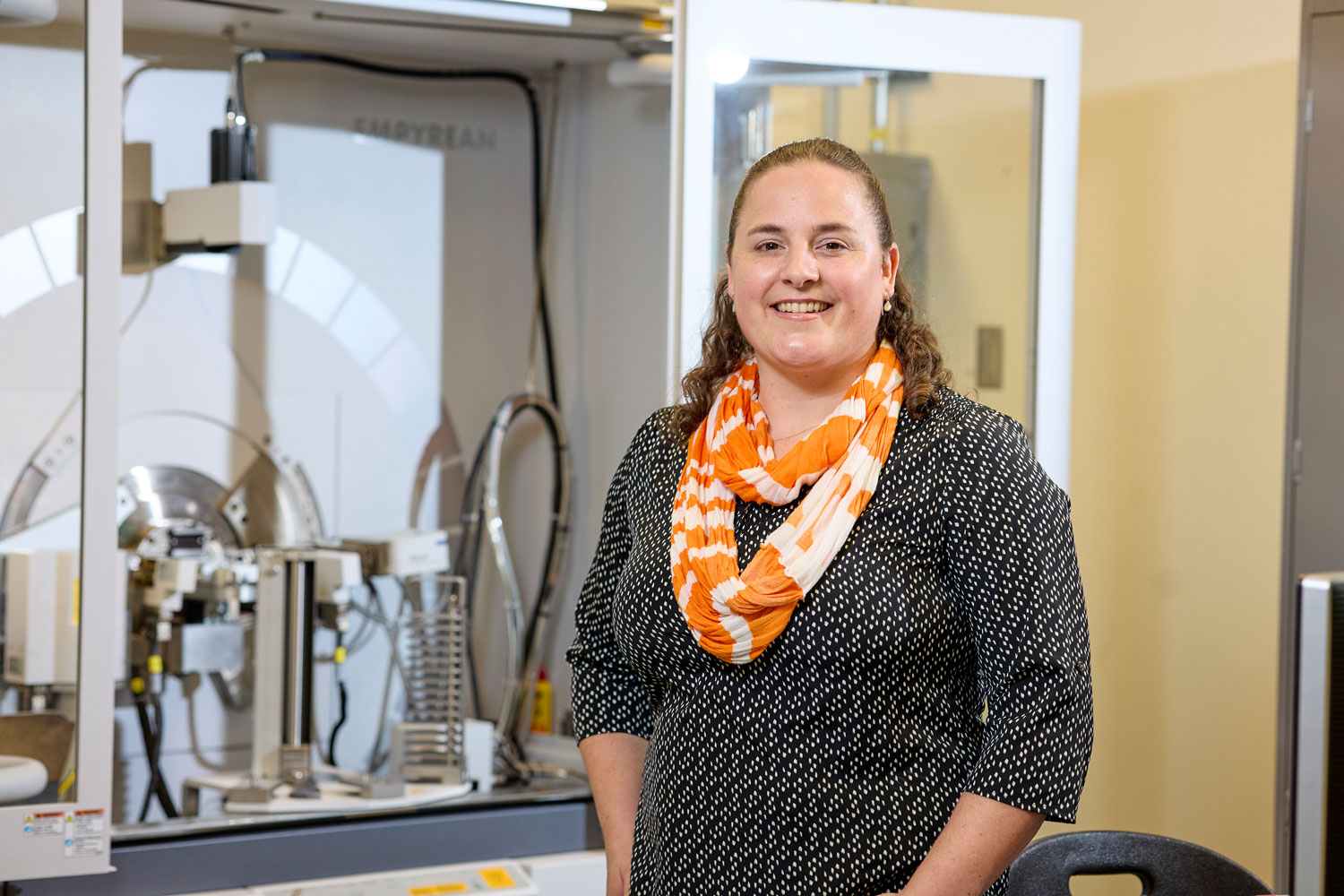
Their approach involves different synthesis approaches to fine-tune not only which ions are included but also how they are arranged inside a specific structure. It requires highly sophisticated technology such as neutron, X-ray, and electron scattering, and the researchers have also developed new tools by applying these technologies in novel ways.
“I think we’re pushing the boundary of what’s possible,” Page said.
STEM equity, diversity, accessibility, and inclusion are a passion for Page, who grew up in rural Maine and knew little about career opportunities in science until she got to college.
“As soon as I was exposed to it, I fell in love with it,” she said. “Here, surrounded by rural areas, I know there are kids and communities to reach and to invite to become part of the cutting edge of science and engineering at UT.”
Page has planned two projects to address NSF community service requirements. For the first, she is designing a coloring book that will combine designs based on atoms, molecules, and their crystal structures with stories about a diverse group of scientists and their research.
“There are lots of stereotypes still, and I want to show the public that lots of different people become scientists,” she said.
The other project builds on work she did with a 2020 minigrant from UT’s Division of Diversity and Engagement to create a TechShop in a Box Workshop for 50 middle school girls in the Oak Ridge Computer Science Girls program. Page provided virtual instruction while the girls used kits to get hands-on experience in the basics of materials science.
Page and her husband, ORNL engineer Michael Crowell, live in Oak Ridge. In their free time, they enjoy taking their children―Wriston, 10, and Abigail, five― to their cabin on Watts Barr Lake.
Something few know: Page was a three-time collegiate national champion in Olympic weightlifting and competed in the 2008 Olympic Trials―all while dealing with a new diagnosis of Type 1 diabetes, which requires her to wear an insulin pump around the clock.
“I’m a bionic woman,” she said.
